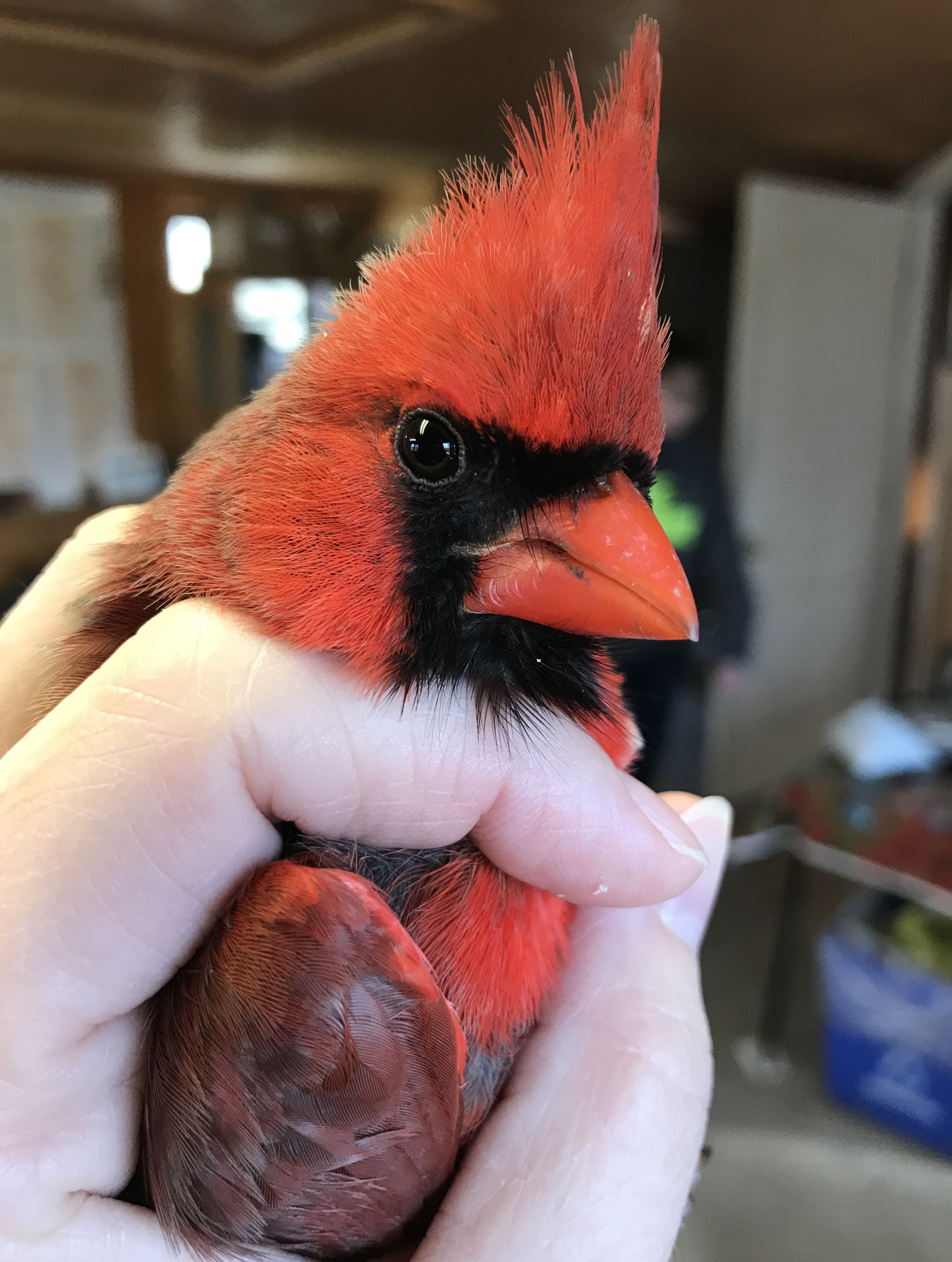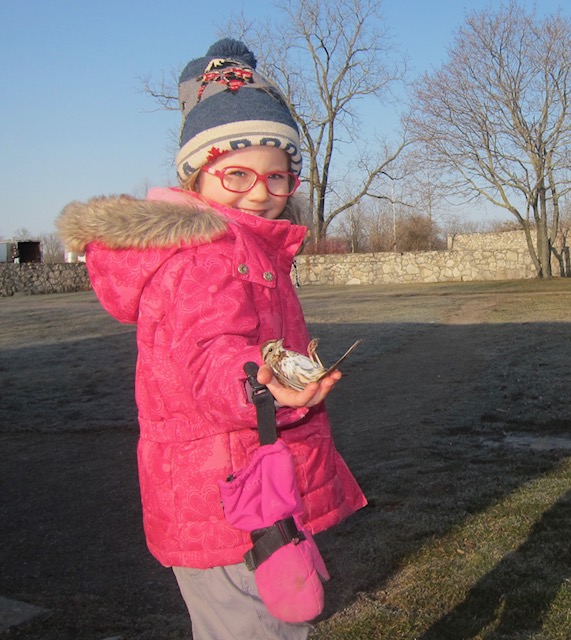I’ve been gathering no moss over the past 2 months: two and a half weeks in Malawi; another two and a half in Kenya; a week in the Azores; and two weeks in the south of France (which, by the way, is still latitudinally north of Ruthven).
In Africa I saw (and sometimes banded) a good number of Eurasian migrants. What an astounding journey for some of these birds! Cross Europe; cross the Mediterranean; cross the Sahara Desert; cross Central Africa; and some of them were still heading south even when I encountered them in Malawi, making for South Africa!
In Malawi, I stayed just outside the town of Bangula, which, at 16 degrees, is in the far south of the country. A very common migrant I encountered there was the Barn Swallow. These birds seemed to be on the move – singles or small groups all moving in pretty well the same direction on any particular day (as opposed to just meandering around looking for insect prey). My question would be: were they still migrating or were they chasing a weather system which would produce insects? (Swifts, sometimes known as “storm birds” are notorious for doing this.) But in Malawi the rains were just about over. The countryside was green and lush, the ponds and rivers full, and the natives were quick to assure me that soon it would all be brown and covered in dust from the roads. So I’m thinking those moving swallows were still migrating.
In Kenya the countryside was brown; the rains had just started. There were a LOT of Barn Swallows there as well, many more than in Malawi. Sometimes they would be perched on telephone/electrical lines in their hundreds. Local farmers say that swallows gathering on the wires is a sign that it is time to plant – rains are imminent.
In both countries swallow food – insects- seemed to be plentiful. I don’t think the world-wide decline in their numbers can be pegged to their wintering habitat.
In southern France there was just a hint that migration north was beginning: a few Willow Warblers and Chiffchaffs and, in the Camargue, a few White Storks. When I got up on the morning of March 25th, in Uzes, I checked outside and there, perched on a rooftop aerial, was a solitary Barn Swallow. By the time I thought of grabbing my camera it was gone and I never saw another one while in France. Wouldn’t you love to know where it had spent the Winter!? And what was it doing so far north when most of its compatriots were still far to the south? Getting a jump on nesting sites? A real gamble for an insectivore if the weather turns bad.
I was asking myself the same question yesterday when I spotted a solitary Tree Swallow sailing low along the river before perching on an overhanging branch on the far shore – out of the wind and in the sun. Later in the day I noticed that there were a few midges in the sheltered areas. Hopefully it found them. It was cold yesterday and even colder last night.
But then today, despite the frost during the night, 4 of them arrived over the Ruthven parking lot. They were checking out nesting boxes and using the Motus tower antenna as a convenient perch. Ethan noticed that one of them was banded! For all intents and purposes they were home. Lets hope that they can handle the lousy weather that is coming in the next couple of days.
Banding was slow but Ethan had some “good birds” on census: Wood Ducks, Pileated Woodpeckers, Hooded Mergansers, and an Eastern Phoebe. We also had an energetic crew of volunteers so all in all it was a very pleasant day.
And while it feels slow down here, migration is very much on the way. Ethan sent me this email yesterday from the Collingwood area: Hi Rick! Long time no see. Just wanted to let you know that I’m coming tomorrow to help out, and see what migrants are moving through! Lots have been moving farther North by my chalet (near Collingwood), and I’ve had Woodcocks, Tree Swallows, Meadowlarks, Kingfishers, Rusty Blackbirds and three species of geese moving through. I’ve found that for some reason it’s a little slower down here, but we’ll see what tomorrow’s like. I’m not sure exactly what time you’ll start, but I assume the good ‘ol half an hour before dawn should be good. See you tomorrow.
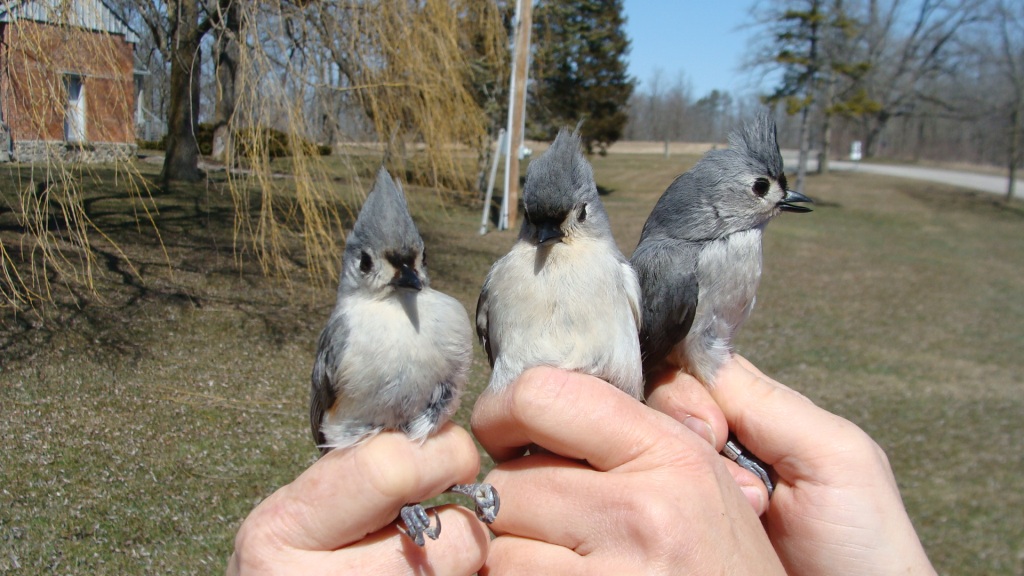
3 retrapped Tufted Titmice from the same net at the same time. One was an adult and two were just entering their second year. A family group?
Banded 13:
1 Mourning Dove
1 Downy Woodpecker
2 Song Sparrows
1 Dark-eyed Junco
1 Brown-headed Cowbird
6 American Goldfinches
1 House Sparrow
ET’s: 40 spp.
Photo Gallery:
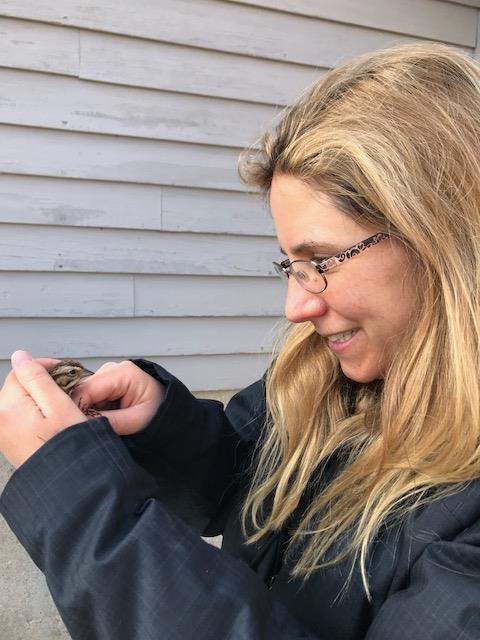
We had a number of Song Sparrow retraps – birds returning to their breeding ground. We made full use of them to expose visitors to the wonder of a bird in the hand. Janet is scrutinizing this one. FAS
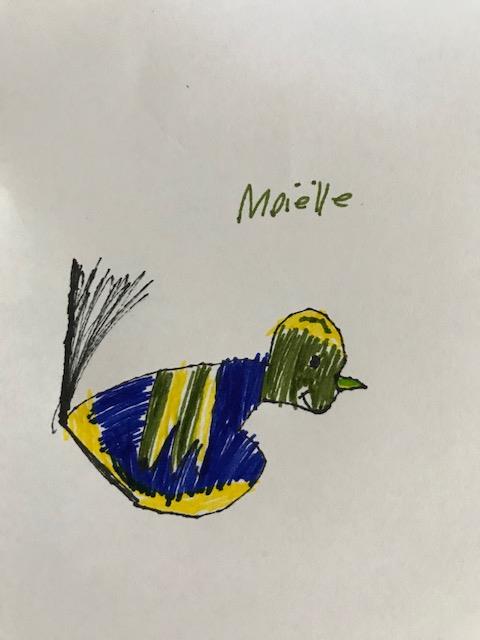
Inspired by the experience, Maelle sent me this Picassoesque picture of a (smiling) American Goldfinch. FAS
Rick

